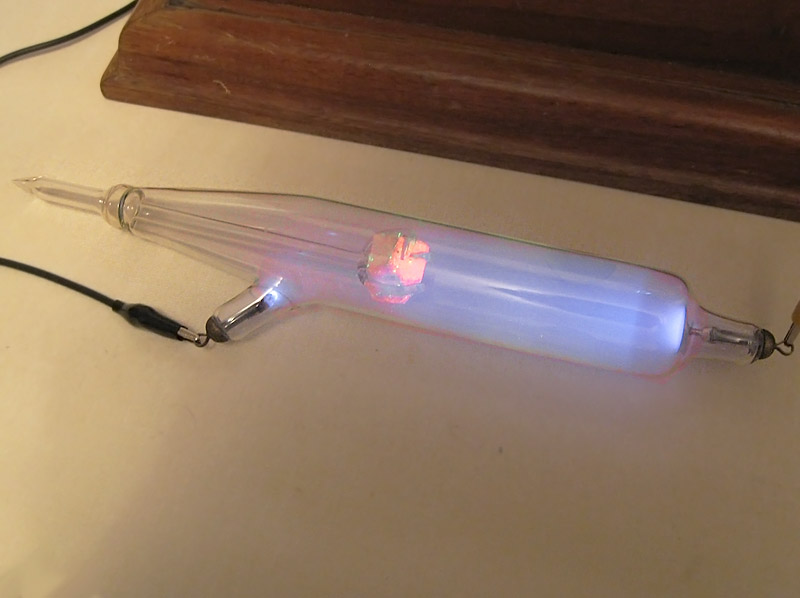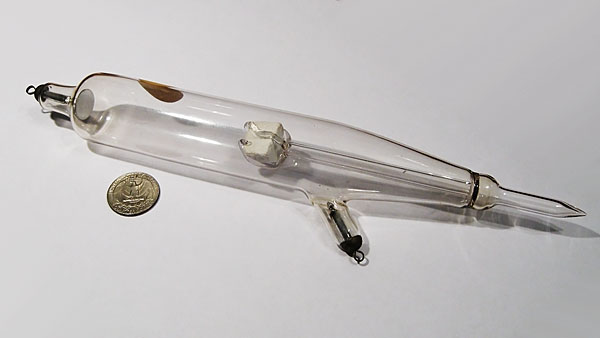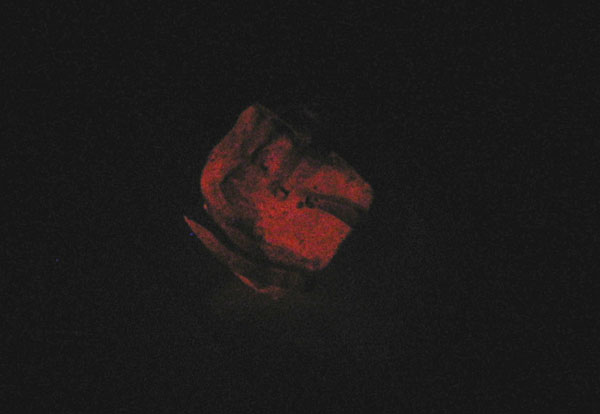| Crookes Mineral Tube with Calcite | |
| Written by AnubisTTP on 2012-10-16 |
|
This rather obscure Crookes tube is designed to demonstrate the phosphorescent properties of various minerals, in this case calcite, when exposed to an electron beam. The center of the tube contains a cubical sample of calcite caged within the embrace of a bent glass rod. A large plate electrode at the top of the tube generates a cone of electrons that excite the calcite and cause it to glow red. The glow of the calcite is persistent; the sample will continue to emit light for several minutes after power has been removed from the tube. Originally this tube would have been mounted to a turned wooden stand by means of the long glass extension exiting below the calcite sample; a century of human friction stripped this example from it's stand long ago. Based on the tube's cap construction and the way in which the calcite sample is mounted, it is likely this particular tube was made late in the 19th century.

Crookes mineral tube with calcite sample, normal operation.

The calcite cube is held in place with curved bits of glass. Note the end cap construction, which suggests this tube was made prior to the 1940s.

Tubes such as these were originally designed to be powered by large induction coils wired to a Grenet chemical cell.

The calcite sample will continue to fluoresce for several minutes after power is removed.
 Return to Geissler & Gas Discharge Tubes
Return to Geissler & Gas Discharge Tubes








 Return to Geissler & Gas Discharge Tubes
Return to Geissler & Gas Discharge Tubes